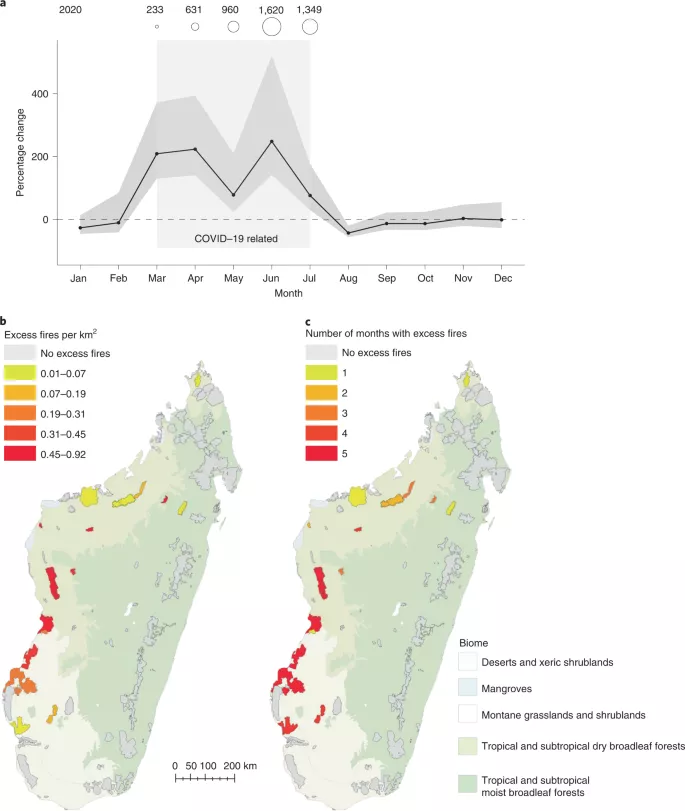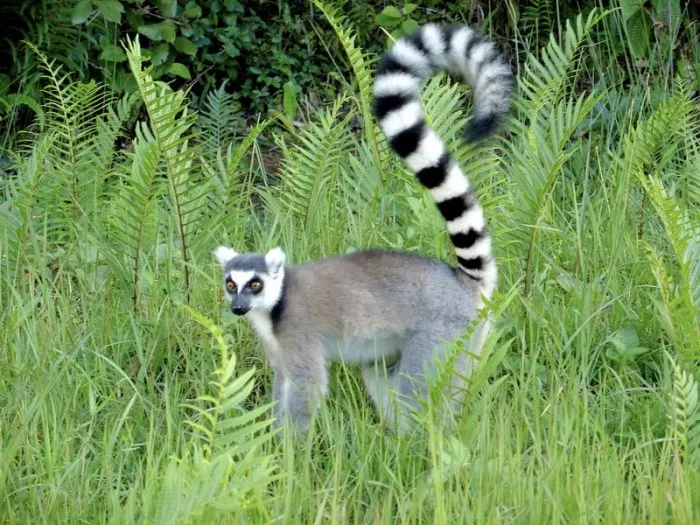According to a new study, when the covid-19 blockade led to the suspension of any site management for five months during 2020, the number of fires in the protected areas throughout Madagascar increased sharply** According to the authors of the study, the findings suggest that the government should consider keeping some staff in protected areas as a "basic service", even during health crises and travel restrictions.
Scientists say more attention must be paid to the management of protected areas rather than just expanding their coverage at the long delayed conference to set international biodiversity targets later this year.
Madagascar is a famous biodiversity "hot spot", and some species, such as the famous lemur population, do not exist elsewhere. The island is also at the forefront of the struggle between wildlife protection and habitat loss.
Published in [Nature - sustainable development] on May 5( https://www.nature.com/articles/s41893-022-00884-x ) 》The study in the journal is the first study to measure the impact of the pandemic on protected areas.
An international team of scientists led by the universities of Helsinki and Cambridge used historical and contemporary fire and weather data to predict the monthly burning rate of Madagascar's protected areas during 2012-2020.
They compared the data model with the actual number of fires collected by satellites and found that the period of fire raging far exceeded the expectations of climate and previous combustion patterns.
When the first blockade in 2020 stopped the on-site management of the reserve, the number of fires - mostly in threatened forest habitats - soared 209% in March, 223% in April, 78% in May, 248% in June and 76% in July.
However, once management operations resumed, the burning soon returned to normal levels - despite continued border closures and economic difficulties due to the continuing pandemic.

The researchers described this scale of combustion in the reserve as "unprecedented" in Madagascar's recent history. The only comparable period was during the two civil strife before the elections in 2013 and 2018, but even so, the worst month was only a 134% increase in combustion.
Professor Andrew balmford, senior author of Cambridge University, said: "the damage caused by covid-19 clearly shows that the interruption of protected area management can have a huge impact on habitats."
"Over the past two decades, excessive fires in Madagascar's protected areas have been limited to an occasional one or two months." "When all staff were evacuated from the reserve in March 2020, the fire rose sharply and continued to be fierce for an unprecedented five months. When the staff began to return, the fire just disappeared," he said
Although the research team said they were not sure what caused all the fires in the early days of covid-19, the lead author, Dr. Johanna Eklund of the University of Helsinki, said that local communities already struggling economically would be further pressured by the blockade.
"Madagascar has a very high poverty rate and a history of conflict between the livelihoods of vulnerable people and saving unique biodiversity," said Eklund, a visiting researcher at the University of Cambridge.

"The pandemic has increased the sense of economic insecurity of many people, so it is not surprising if it leads some people to occupy protected areas when on-site management activities are suspended."
Eklund said that the lack of on-site patrols to prevent any fire from spreading, coupled with the community's use of "burning" - or slash and burn farming - may be the main reason for the surge in fires in the blockade area. These technologies clear vegetation for crops and cattle, but are illegal in protected areas.
"Importantly, this study did not measure fires outside the protected areas, so we cannot measure how much the protected areas actually reduce combustion compared to unprotected areas," Eklund said

The team used imaging data from NASA's satellite system, which can detect "thermal anomalies" and notice near real-time fire management alerts.
Eklund, who has been studying in Madagascar for nearly a decade, realized that she could still remotely assist those who protected forests. "The satellite can well capture the fire and show where the protected area is under pressure."
Research co-author domoina rakotobe, a former coordinator of the Madagascar organization forum LAFA (network of land reserve managers), added: "the high level of combustion during the blockade clearly demonstrates the value of on-site management. The reserve team works with the community to support local livelihoods and protect natural resources."
